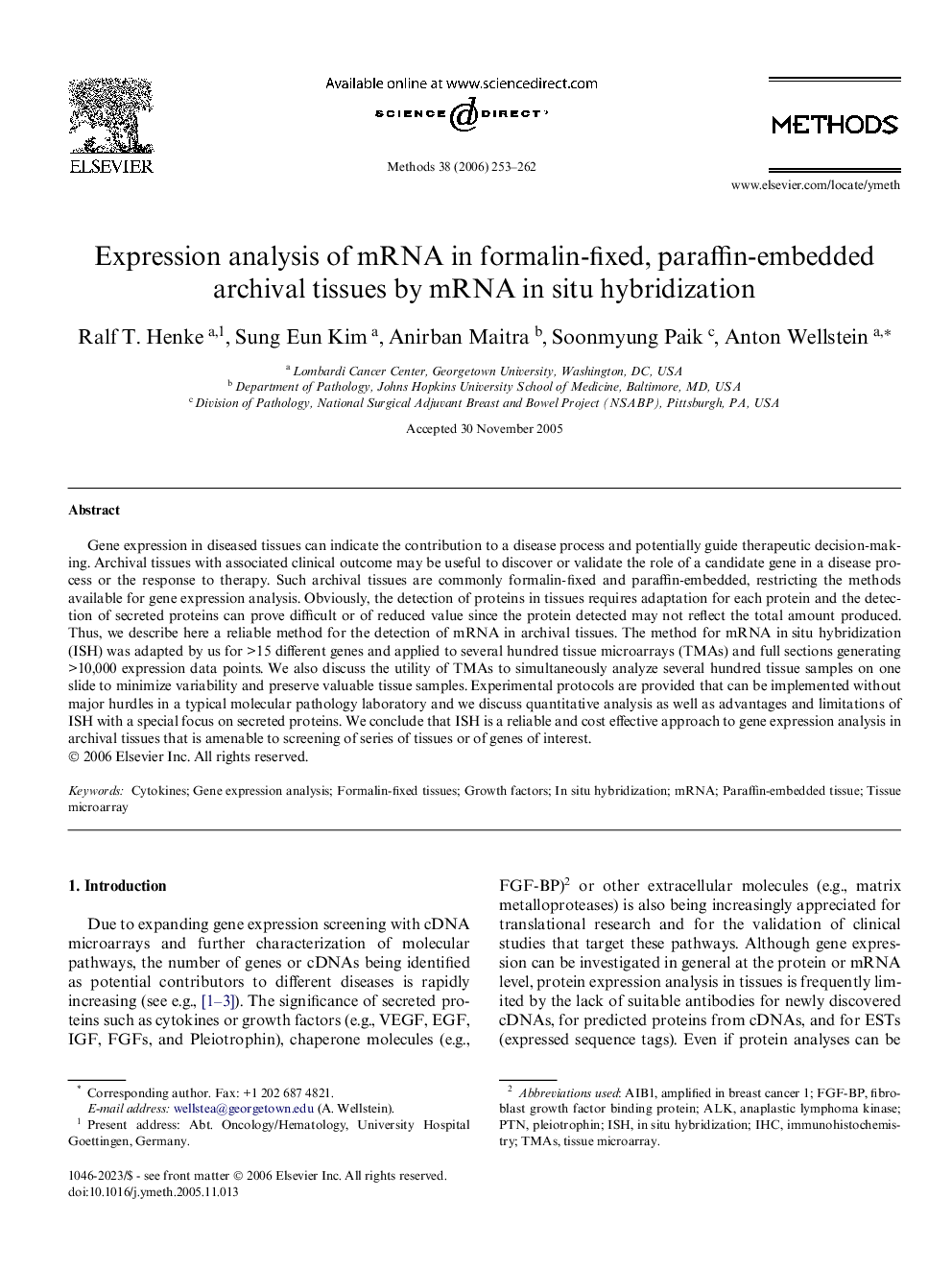| Article ID | Journal | Published Year | Pages | File Type |
|---|---|---|---|---|
| 1994628 | Methods | 2006 | 10 Pages |
Gene expression in diseased tissues can indicate the contribution to a disease process and potentially guide therapeutic decision-making. Archival tissues with associated clinical outcome may be useful to discover or validate the role of a candidate gene in a disease process or the response to therapy. Such archival tissues are commonly formalin-fixed and paraffin-embedded, restricting the methods available for gene expression analysis. Obviously, the detection of proteins in tissues requires adaptation for each protein and the detection of secreted proteins can prove difficult or of reduced value since the protein detected may not reflect the total amount produced. Thus, we describe here a reliable method for the detection of mRNA in archival tissues. The method for mRNA in situ hybridization (ISH) was adapted by us for >15 different genes and applied to several hundred tissue microarrays (TMAs) and full sections generating >10,000 expression data points. We also discuss the utility of TMAs to simultaneously analyze several hundred tissue samples on one slide to minimize variability and preserve valuable tissue samples. Experimental protocols are provided that can be implemented without major hurdles in a typical molecular pathology laboratory and we discuss quantitative analysis as well as advantages and limitations of ISH with a special focus on secreted proteins. We conclude that ISH is a reliable and cost effective approach to gene expression analysis in archival tissues that is amenable to screening of series of tissues or of genes of interest.
